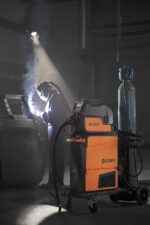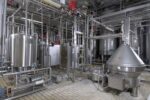HandScanner saves four seconds per scan
Datalogic’s new HandScanner is non-intrusive, hands-free wearable and enhances efficiency and accuracy. The scanner’s low weight allows it to reduce the load lifted by a worker during every working shift by up to 1.5t. Capable of scanning from 10cm to 150cm, HandScanner is suitable for a broad range of tasks in transport, logistics, warehousing, manufacturing, retail, and healthcare industries. Weighing just 40g and measuring 50 x 45 x 16mm, this is the lightest and most compact hands-free scanner available to improve workplace efficiency. It saves four seconds per scan, with 33% less errors. The HandScanner complements Datalogic’s comprehensive range of advanced industrial scanning equipment designed to deliver efficiency, accuracy, reliability and ergonomic benefits to demanding industries. “Compared to ring scanners, the HandScanner is thinner and positioned on the back of the hand, therefore it is less intrusive and less exposed to hits than a ring scanner that stays on the fingers of a worker,” says Mr Stefano Pistis, Product Manager, Datalogic. “This durable, practical and ergonomic design results in up to a 20 per cent reduction in scanner damage,” adds Mr Pistis. A fully charged HandScanner battery can last almost two working shifts, running up to 15 hours and 10,000 scans. With a 2-slot charging station the battery can be fully recharged in 2 hours. Equipped with a megapixel sensor, the HandScanner captures 1D/2D bar codes and is available in two models: a standard range – designed for close range scanning between 10 to 80cm for manufacturing, retail and healthcare applications; and a mid-range model with a scanning range of 30 to 15cm, which covers applications in transportation and logistics such as warehousing, plant floors, docks, and stock yards. HandScanner’s non-intrusive and comfortable design result in up to a 20% reduction in scanner damage compared with ring scanners. The HandScanner […]










